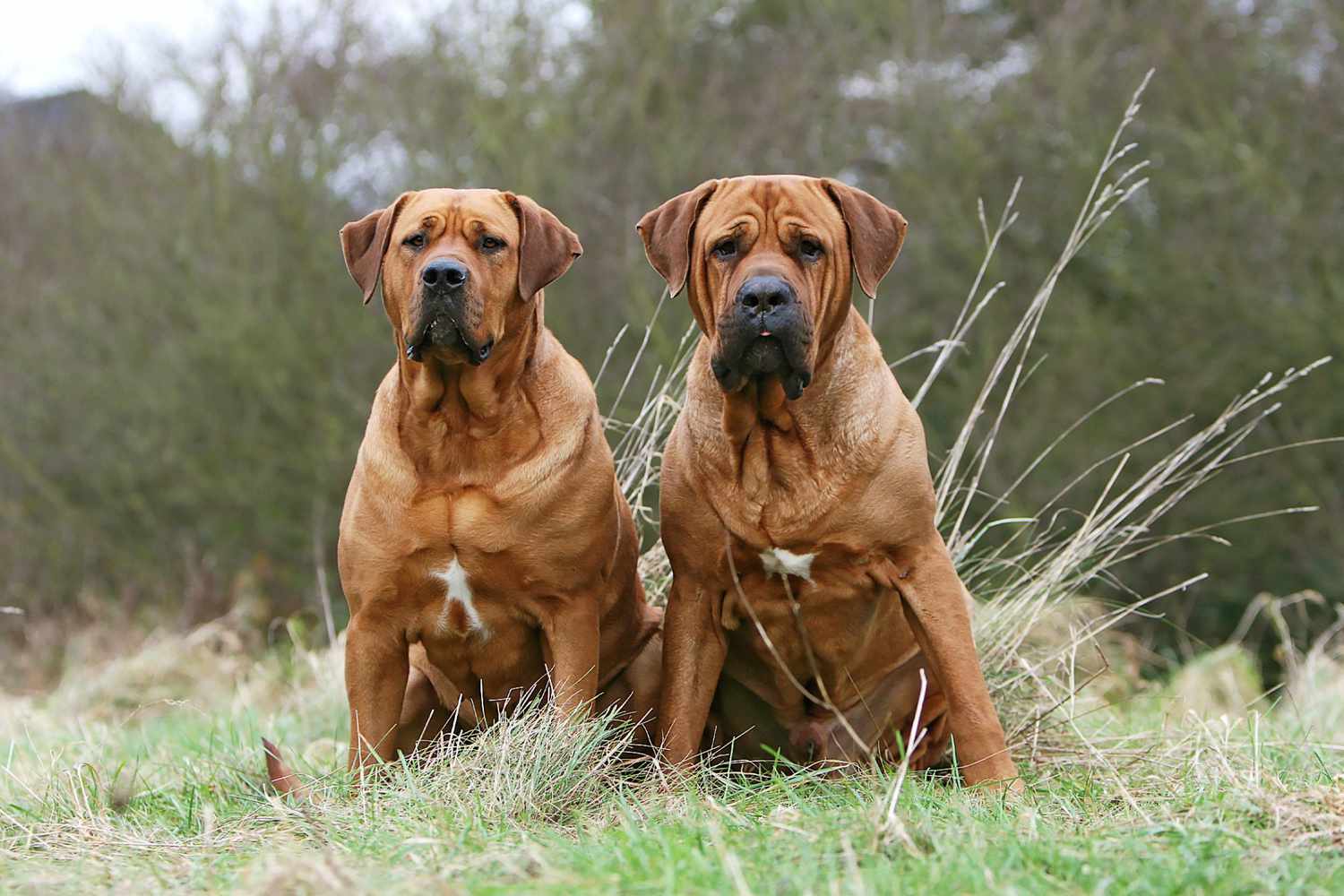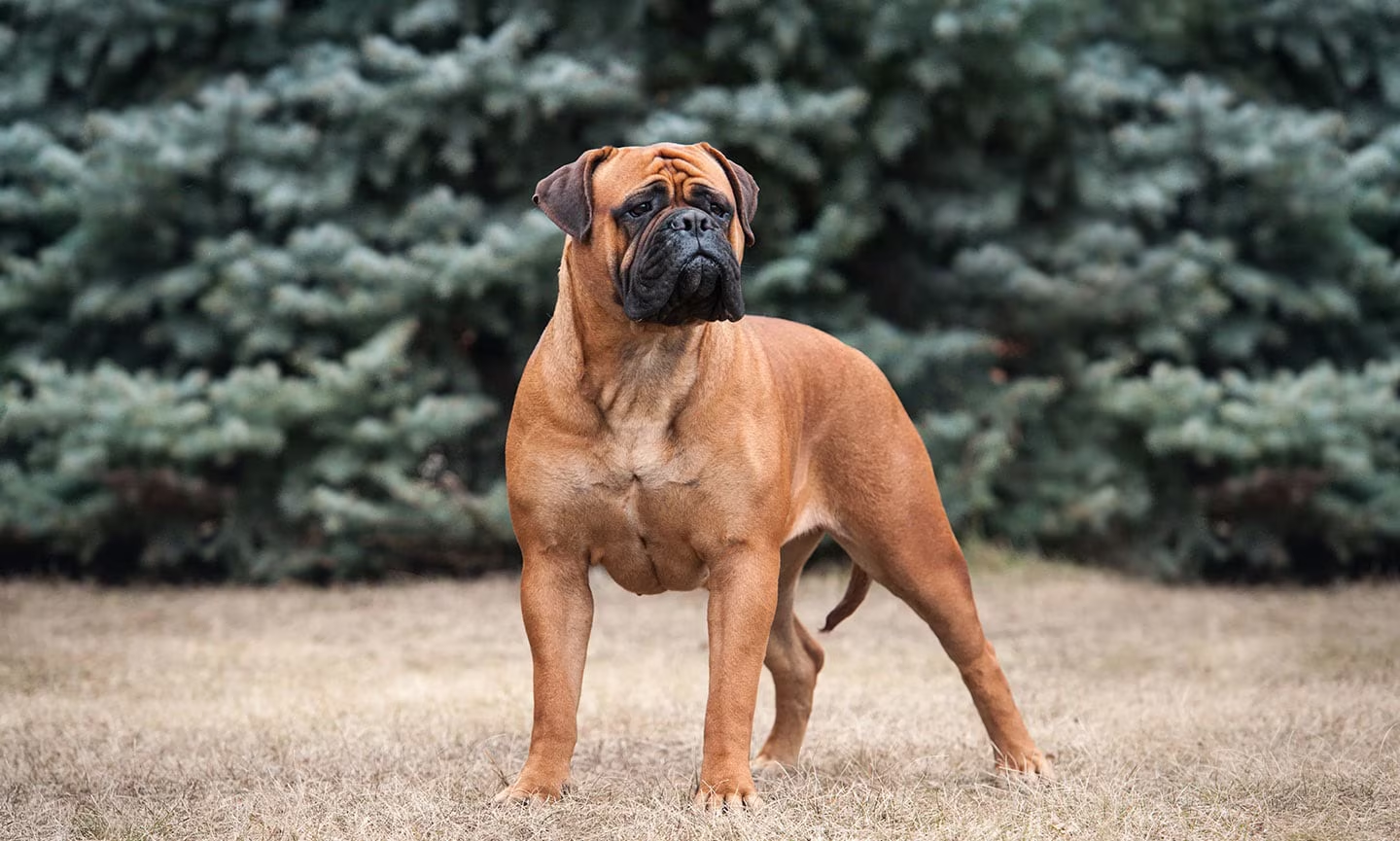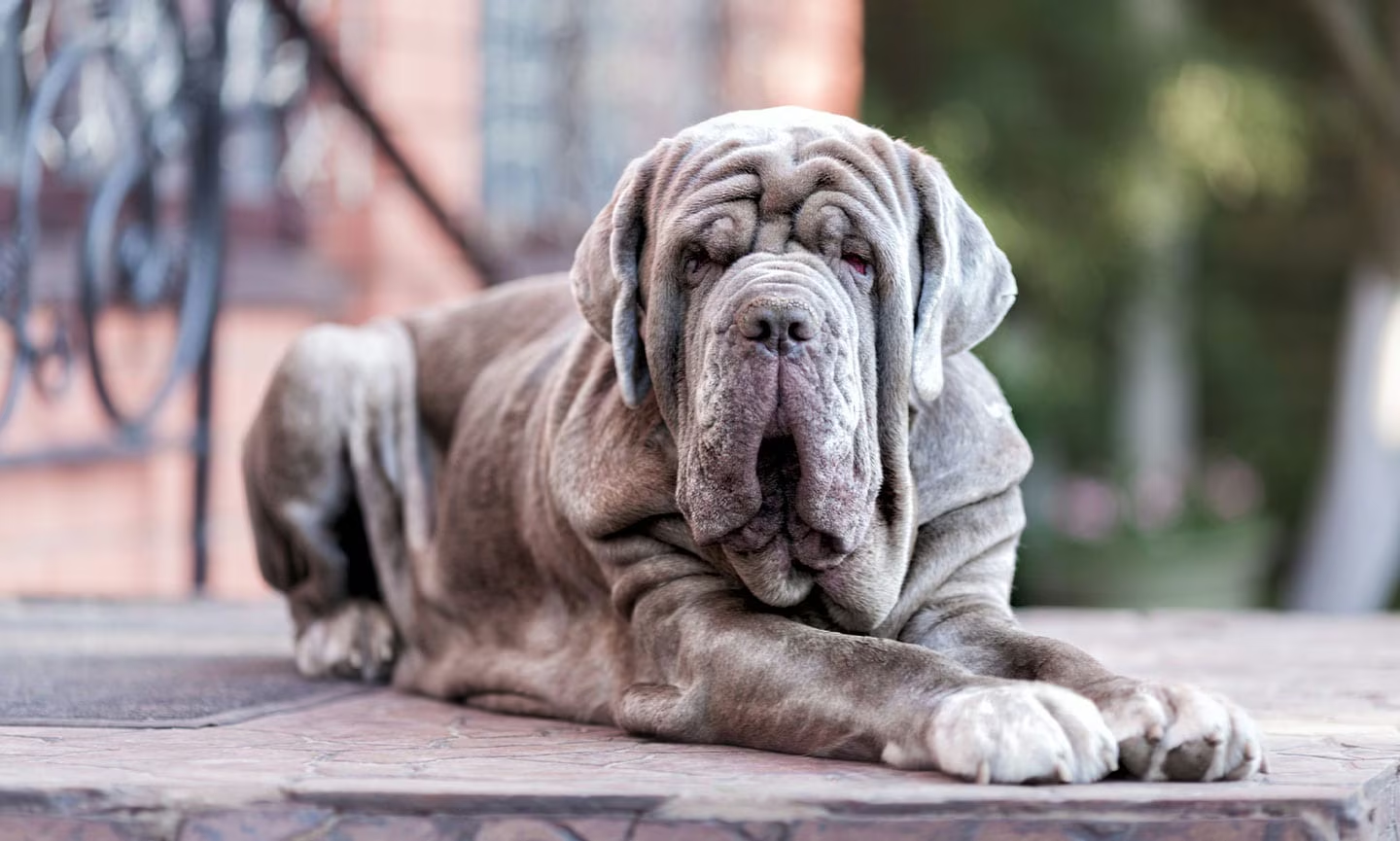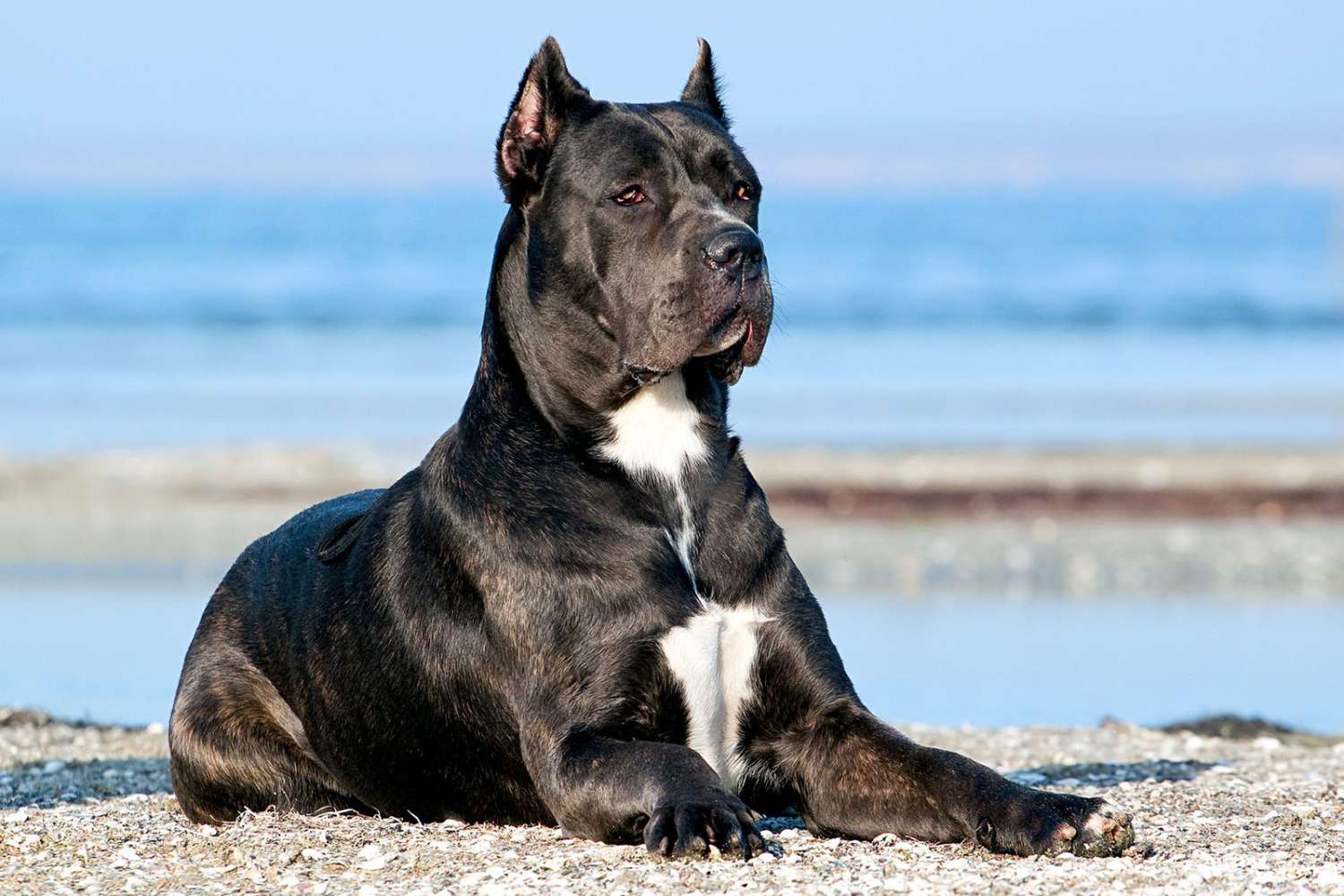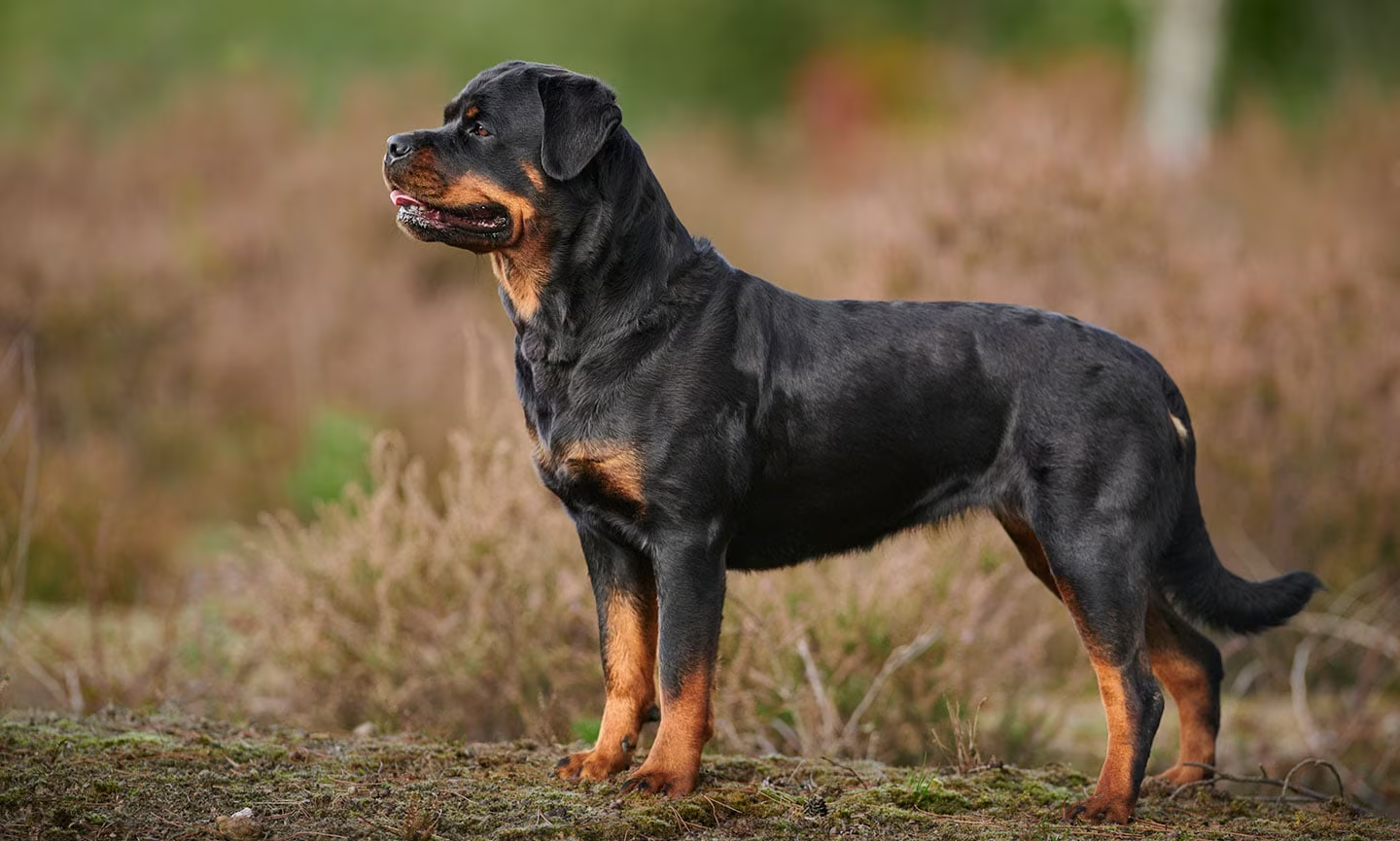Part I: The Silent Guardian
In the misty mountains of Shikoku, where ancient traditions still linger in the air, there walks a creature of contradictions. The Tosa – Japan’s living paradox.
They call him the “Sumo Wrestler” of the canine world. A gentle behemoth whose silent footsteps belie his immense power. A fighting spirit housed in the soul of a philosopher. He is patience embodied in muscle and bone.
I first encountered a Tosa during my travels through rural Japan, far from the neon glow of Tokyo. The morning fog was just lifting from the rice fields when a local farmer approached, a mountain of brown fur moving silently at his side. I had heard stories of the Japanese Tosa, but nothing prepared me for the quiet dignity that radiated from this magnificent creature.
“Hachiko-san has been with me for seven years,” the farmer told me with obvious pride. “He guards my home, but has never once needed to bark. His presence alone is enough.”
As I studied this living monument to selective breeding, I understood what the farmer meant. The Tosa doesn’t threaten – he simply is. And in that existence lies his power.
But behind those contemplative eyes lies a complex history that has brought this Japanese national treasure to a global crossroads. Is he a cultural artifact worth preserving? A dangerous anachronism best left behind? Or something far more nuanced – a symbol of both human ingenuity and our complicated relationship with the animals who share our world?
To understand the Tosa is to delve into Japanese history, global ethics, and the very nature of what it means to be a guardian. Join me on this journey into the world of Japan’s canine samurai – the silent sentinel whose future hangs in the balance.
Part II: Forged in History’s Fire
The Tosa’s story begins, as many great Japanese tales do, with the opening of Japan to Western influence.
For centuries, the isolated island nation had developed its own traditions, including dog fighting – not as a blood sport in the Western sense, but as a disciplined test of courage, endurance, and fighting spirit. Native Japanese breeds like the Shikoku participated in these contests, which emphasized technique over violence, with strict rules forbidding sounds of aggression.
Then came 1853 – Commodore Perry’s black ships appeared in Tokyo Bay, ending more than 200 years of Japanese isolation. As foreign influences flooded into the country during the Meiji Restoration (1868-1912), so too did foreign dogs.
A Purposeful Creation
In the southern province of Tosa (modern-day Kōchi Prefecture) on the island of Shikoku, local dog enthusiasts saw an opportunity. Taking their native Shikoku dogs – compact spitz-type dogs weighing around 45 pounds – they began a deliberate program of crossbreeding with newly available Western breeds.
The transformation was systematic and purposeful:
- 1872: Bulldogs were introduced, adding jaw strength and determination
- 1874: Mastiffs contributed size, power, and dignified bearing
- 1876: German Pointers added intelligence and trainability
- 1924: Great Danes provided additional height and elegance of movement
Many sources suggest that Bull Terriers and St. Bernards were also incorporated, though the exact timeline of their influence remains unclear.
Unlike many breeds that evolved over centuries through environmental adaptation, the Tosa represents one of history’s most deliberate and focused breeding programs – a canine alchemist’s dream of combining the finest qualities from diverse breeds into a single magnificent animal.
A Cultural Icon Emerges
By the early 20th century, the Tosa had become more than just a dog – it was a cultural symbol. Between 1924 and 1933, considered the golden age of Tosa breeding, more than 5,000 Tosa breeders operated in Japan, perfecting what they saw as the ultimate expression of canine nobility.
The Tosa embodied Japanese aesthetics: powerful yet controlled, emotional yet disciplined. In traditional Japanese dog fighting contests (which continue legally in some regions of Japan today), the Tosa is expected to face his opponent with silent dignity. Unlike Western dog fighting’s emphasis on aggression and injury, the Japanese tradition values stoic endurance – a dog that growls or whimpers is considered to have lost face, regardless of the match’s physical outcome.
This cultural context is essential to understanding the Tosa. He was never bred to be a pet or even primarily a guardian, but rather a living embodiment of bushido – the samurai code that valued self-discipline, respectful behavior, and loyalty unto death.
As World War II engulfed the globe, the Tosa, like many large dog breeds, faced near extinction. Food shortages made maintaining large dogs nearly impossible, and breeding programs collapsed. After the war, devoted enthusiasts worked to restore the breed from the few surviving specimens, but the Tosa would never again reach its pre-war prominence in Japan.
Part III: The Physical Temple
To encounter a Tosa is to be reminded of what selective breeding can accomplish when pursued with vision and purpose over generations.
Presence and Proportion
The Tosa’s physical appearance varies significantly depending on whether he comes from Japanese or Western breeding lines. Japanese Tosas typically stand 21.5-23.5 inches at the shoulder and weigh 80-135 pounds – substantial, but not gigantic. Western-bred Tosas, however, often reach 24-32 inches and can weigh a staggering 200+ pounds.
Regardless of size, all Tosas share certain defining characteristics. The body is rectangular rather than square, powerful and muscular without appearing bulky or cumbersome. The back remains level, supported by straight, substantial legs and large, cat-like feet that provide a stable foundation for the dog’s considerable mass.
The head is large and broad, with a clearly defined stop and moderately short muzzle. Small, dark eyes convey a calm, dignified expression that reveals little of the dog’s thoughts – appropriate for a breed valued for its emotional self-control. The ears hang close to the cheeks, medium-sized and relatively thin.
Perhaps most distinctive is the Tosa’s skin – loose and abundant, particularly around the neck and head, forming dewlaps that contribute to the breed’s distinctly solemn appearance. This loose skin served a practical purpose in the fighting ring, allowing a dog to twist and turn even when gripped by an opponent.
The Canvas of Color
The Tosa wears a short, dense coat that requires minimal maintenance – form following function for a breed developed for practical purposes rather than decorative appeal. The most common colors include:
- Red
- Fawn
- Brindle (sometimes called “tiger” pattern in Japan)
- Black
Some Tosas display white markings on the chest and feet, though extensive white is generally discouraged in show specimens.
The coat’s texture is harsh rather than silky, again emphasizing utility over aesthetics. This practical covering requires only occasional brushing to remove dead hair and distribute natural oils – a blessing for a working dog in Japan’s varied climate.
Movement and Presence
To watch a Tosa move is to witness controlled power. Despite their size, they move with surprising grace, covering ground efficiently with a smooth, level gait that wastes no energy. The head is typically carried at medium height, neither excessively proud nor lowered in submission.
There is something almost meditative about a Tosa’s movement – deliberate, measured, and purposeful. Nothing is hurried; nothing is wasted. It’s as if each step is a conscious decision rather than an automatic action.
And it is this quality – this sense of perpetual mindfulness – that perhaps best captures the essence of the Tosa’s physical being. They exist fully in each moment, ready but not tense, powerful but not threatening, present but not imposing. They are living examples of contained potential – the power that is most impressive precisely because it is held in check.
Part IV: The Soul Within
To understand the Tosa’s temperament is to understand Japanese values. This is not a dog that wears its heart on its sleeve or demonstrates its feelings through exuberant displays. The Tosa’s emotional world runs deep and still, like a mountain lake that reveals its true depth only to those patient enough to explore it.
The Contemplative Guardian
First and foremost, the Tosa is a guardian – but one that operates through presence rather than aggression. Unlike more reactive guardian breeds that respond to threats with shows of force, the Tosa typically observes and evaluates before taking action.
“The Tosa’s temperament is marked by patience, composure, boldness and courage,” according to the American Kennel Club. “He is normally a tranquil, quiet, and obedient dog, with a calm but vigilant demeanor.”
This quiet vigilance is perhaps the Tosa’s most distinctive personality trait. They do not patrol restlessly or bark at every unusual sound. Instead, they position themselves where they can observe their territory and family, maintaining a relaxed but attentive state that can shift to focused action in an instant if a genuine threat appears.
With family, the Tosa displays a gentle affection that seems almost incongruous with his imposing size and fighting heritage. They typically form strong bonds with their people, showing particular patience with children of their household. This is not an effusive or demonstrative love, but rather a steady, reliable presence – the mountain that doesn’t need to announce its strength.
The Complexity of Heritage
The Tosa’s fighting background creates complexities that responsible owners must acknowledge and manage. While well-bred and properly raised Tosas are not indiscriminately aggressive, they do typically display:
- Strong territorial instincts
- Natural wariness toward strangers
- Potential dog-aggression, particularly toward same-sex dogs
- High pain tolerance
- Determination and persistence when engaged
These traits – which served the breed well in its historical role – require thoughtful management in a modern companion dog. A Tosa is not a breed that naturally fades into the background of family life; rather, it requires an owner who understands its nature and provides appropriate structure, socialization, and outlets for its natural instincts.
Perhaps most important to understand is that the Tosa’s self-control is part of its heritage. Unlike breeds that were selected for reactive aggression, the Tosa was bred to remain composed even under extreme provocation. This results in a dog that rarely gives warning signs before taking action – a quality that makes experienced ownership and careful management essential.
The Intelligent Partner
Behind the Tosa’s stoic exterior lies a keen intelligence. They learn quickly but may show a certain independence in applying what they’ve learned. This is not a breed that lives to please its owner through obedience alone; rather, they seem to evaluate commands for their logic and necessity.
Training a Tosa requires respect for their dignity and intelligence. Harsh methods or attempts at domination typically backfire, resulting in a dog that withdraws its cooperation rather than submitting. Positive, consistent methods that acknowledge the dog’s intelligence yield far better results.
The Tosa responds particularly well to training that emphasizes calm control and clear boundaries. They excel at tasks requiring judgment and self-restraint, but may show less enthusiasm for repetitive obedience exercises or flashy performance skills.
In many ways, the ideal relationship with a Tosa resembles a respectful partnership more than the typical owner-pet dynamic. They neither serve nor rule, but rather walk alongside their chosen human with mutual respect and understanding.
Part V: Living With the Samurai
What does daily life with a Tosa actually entail? Having spent time with several Tosa owners during my research, I’ve gathered insights into the realities of sharing your life with Japan’s canine samurai.
The Physical Requirements
Despite their imposing size, Tosas are relatively low-maintenance in terms of exercise. They typically require:
- Moderate daily exercise (40-60 minutes)
- Access to secure outdoor space
- Mental stimulation through training or problem-solving activities
Unlike some working breeds that become destructive without intense physical outlets, the mature Tosa generally adapts well to a moderately active household routine. They tend to conserve energy when indoors, often finding a favored observation point from which to monitor household activities.
Their short coat requires minimal grooming – weekly brushing is typically sufficient to remove loose hair and maintain coat health. The loose skin around the face and neck may need occasional cleaning to prevent irritation, particularly in hot or humid conditions.
Nutrition demands careful attention, as with any large breed. Quality food in carefully measured portions helps prevent the excess weight that can stress joints and internal organs. Slow growth is preferred for puppies to allow proper development of the musculoskeletal system.
The Social Contract
Living successfully with a Tosa requires establishing clear social boundaries and expectations from the beginning. These dogs respond best to consistent routines and clearly defined rules about:
- Acceptable behavior toward family members
- Protocols for greeting visitors
- Boundaries within and around the home
- Interaction with other animals
Early and ongoing socialization is essential, though it may not completely override the breed’s natural reserve toward strangers or potential issues with other dogs. A well-socialized Tosa should learn to tolerate neutral interactions with strangers and unfamiliar dogs, even if they never develop the enthusiastic sociability of some breeds.
Many Tosa owners find that their dogs integrate most successfully into households with clear hierarchies and minimal social chaos. They tend to thrive with owners who value calm predictability over constant novelty and excitement.
Legal and Practical Considerations
Potential Tosa owners must navigate a complex landscape of legal restrictions. The breed is currently banned or restricted in multiple countries, including the United Kingdom, Australia, Denmark, Norway, and others, primarily due to its fighting heritage rather than actual bite statistics.
Even in countries where Tosas are legal, owners often face practical challenges including:
- Difficulty obtaining homeowner’s insurance
- Rental housing restrictions
- Public perception issues
- Limited access to dog parks and social venues
Responsible ownership includes understanding and accepting these limitations. The Tosa is not a dog for those who prioritize social convenience or worry greatly about public opinion.
Health considerations are another practical reality. While generally healthy for their size, Tosas may experience conditions common to large breeds including hip and elbow dysplasia, heart issues, and bloat. Their average lifespan of 10-12 years is respectable for a giant breed but still shorter than that of smaller dogs.
Finding a reputable source for a Tosa puppy presents another challenge. The breed’s rarity in most Western countries means that prospective owners must research carefully to avoid supporting irresponsible breeders who may prioritize size or aggression over health and stable temperament.
Part VI: The Future of the Samurai
As our global understanding of animal welfare evolves, the Tosa stands at a crossroads. Is there a place in our modern world for a breed developed primarily for a purpose – ritualized combat – that many now find ethically troubling?
Cultural Preservation vs. Ethical Evolution
In Japan, the Tosa remains a cultural icon, particularly in Kōchi Prefecture, where limited, regulated dog fighting continues as a traditional practice. Advocates argue that Japanese dog fighting, with its emphasis on technique and ritual rather than injury, represents a cultural tradition worth preserving—distinct from the brutal underground fighting that plagues other regions.
Outside Japan, the Tosa faces a different challenge: finding a meaningful role that honors its heritage while adapting to contemporary values. Some enthusiasts focus on preserving the breed as a living cultural artifact, emphasizing its dignified temperament and guardian abilities rather than its fighting history.
Others question whether continued breeding of Tosas serves the dogs’ best interests, given the limited homes suitable for such a specialized breed and the health issues that can affect large dogs bred primarily for appearance rather than function.
Reimagining Purpose
The most promising path forward may lie in reimagining the Tosa’s purpose while respecting its essential nature. Some Tosas have successfully transitioned to roles including:
- Family guardians in appropriate rural or semi-rural settings
- Therapy dogs, where their calm demeanor can be an asset
- Working roles that utilize their strength and intelligence
- Ambassadors for responsible ownership of powerful breeds
Successful Tosa owners emphasize that these adaptations work best when they respect rather than attempt to erase the breed’s natural tendencies. The Tosa may never be the right dog for casual ownership or urban apartment living, but it can thrive in environments that provide appropriate outlets for its natural guardian instincts and value its dignified temperament.
The Responsibility of Knowledge
Whether the Tosa ultimately finds its place in our changing world depends largely on human choices—the choices of breeders, owners, legislators, and the broader public.
Responsible breeders focus on temperament and health rather than extreme size or fighting potential, carefully screening potential homes to ensure proper placement. Responsible owners commit to understanding their dog’s nature and managing it appropriately, neither denying its heritage nor allowing it to become a dangerous liability.
And perhaps most importantly, those who share knowledge about the breed—writers, trainers, and advocates—have a responsibility to present the Tosa honestly, neither demonizing it based on its history nor romanticizing it for those unprepared for its realities.
Epilogue: The Silent Witness
As I concluded my research for this article, I revisited the farm where I’d first encountered a Tosa. Hachiko-san was still there, a few years older now, moving with the slightly stiffer gait of a senior dog but maintaining his dignified presence.
As the farmer and I talked, a sudden spring storm rolled in, bringing thunder that rattled the windows. I noticed Hachiko-san rise slowly from his resting place, move to sit beside his owner’s chair, and remain there—not pacing or whining, just establishing his quiet presence until the storm passed.
It was a small moment, yet it seemed to encapsulate everything that makes this breed remarkable. The Tosa doesn’t need to announce its protection; it simply offers it, a silent witness to both human fragility and resilience.
Whether this ancient partnership between humankind and the dogs we’ve shaped to reflect our ideals continues into the future remains to be seen. But for those who understand and appreciate the Tosa’s singular qualities, these dogs remain living embodiments of an ethos increasingly rare in our noisy, reactive world—the power of silent strength, the dignity of restraint, and the profound loyalty that needs no words to express itself.
In a world that often values flash over substance and noise over silence, perhaps there is still a place for the canine samurai—not as fighters, but as reminders of the quiet strength that comes from knowing exactly what you are and accepting it with dignity.
